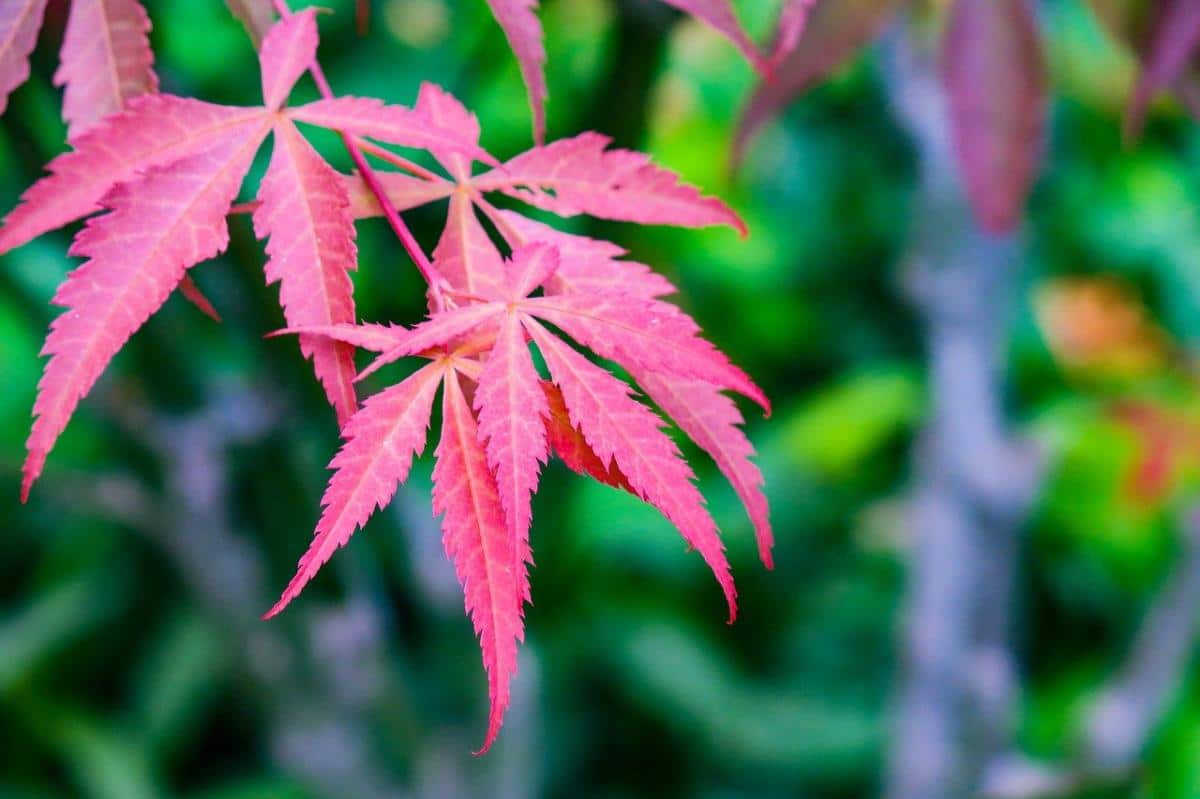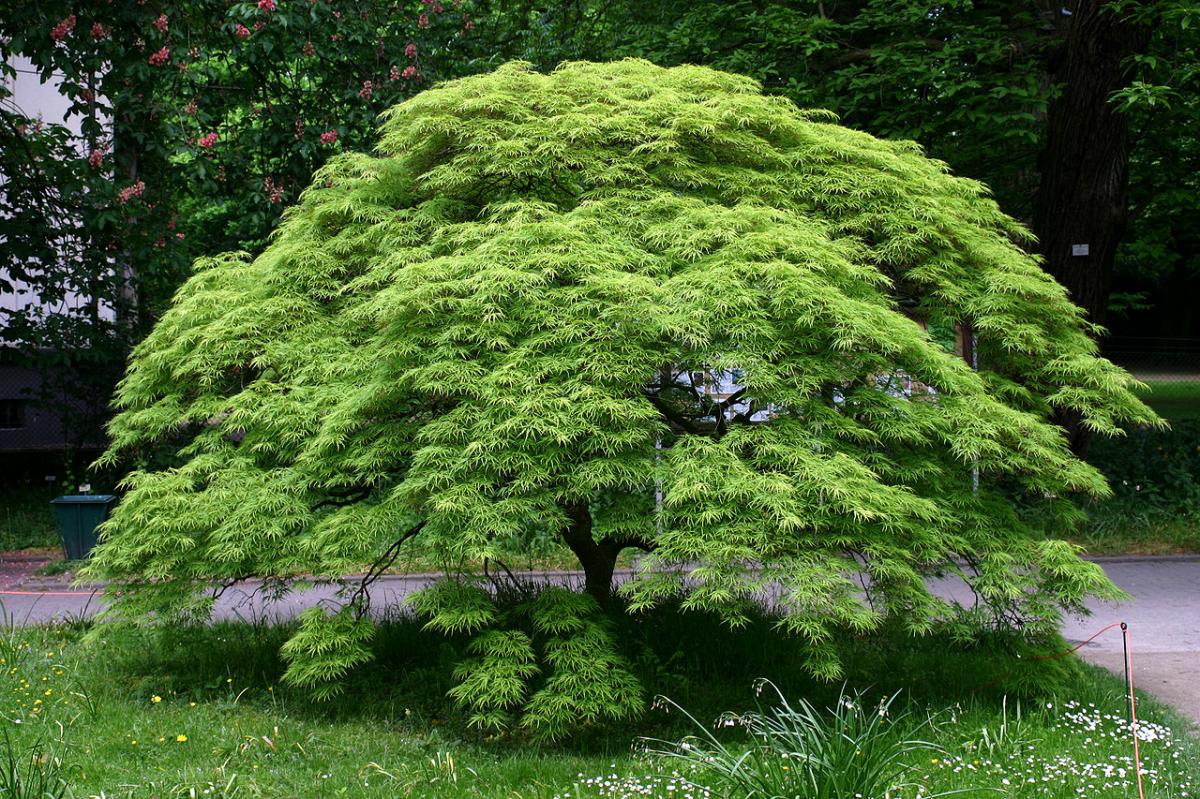
The Japanese maple is a much loved tree or shrub in gardens. Its leaves give that oriental touch that we like to have so much and, in addition, they do not need much care, although it is true that when the climate is warmer than it needs it does become a demanding plant.
Even so, there is no way to provide the best care so that it grows in conditions. One of them is pruning, but When and how to prune a Japanese maple?
When is Japanese maple pruned?

Image - Wikimedia / Rüdiger Wölk
El japanese maple It is a temperate mountain climate plant. It lives in areas where the summers are generally mild, and where the winters are very cold, covering the landscape with snow. With these conditions, what the tree does is grow in spring and summer, to enter autumn and winter at rest.
For this reason, pruning time is late winter, when the buds are about to wake up (that is, to increase in size, to "swell"). Thus, the wounds that we will produce will heal quickly, since as the plant is resuming its growth, sap will circulate through its branches somewhat faster.
How to prune a Japanese maple?
To prune a Japanese maple, you must first know that the plant in question has to be healthy, or at least strong enough to withstand these pruning. You have to think that with each cut we make, the Japanese maple will spend energy to close that wound, and if we can one that is already weak, we risk that it will not overcome it.
In addition, it is important to use proper pruning tools, and that we clean them with water and dish soap before and after use. They are as follows:
- Household scissors (like kitchen ones for example) for green branches with a thickness of 0,5 centimeters or less. Buy them here.
- Anvil scissors for green branches about 1 centimeter thick. On sale here.
- hand saw for the woody ones with a thickness of 2 centimeters or more. You can buy them from this link.
Pruning a Japanese maple grown as a tree or shrub
Pruning a Japanese maple is much easier than it sounds. Follow this step by step to get a very bushy plant with splendid foliage:
- Remove all dead branches, that is, those in which there is no trace of buds.
- Decide what shape you want your maple to be: if you prefer it to grow like a tall tree, remove the low branches thus clearing its trunk; On the other hand, if you prefer it to grow more like a bush, it will be necessary to lower the height of the guide or main branch by 5cm to force it to remove lower branches. Over time, and as it grows, you will only have to select those branches that will be part of the design of your maple.
- Finally, it only remains to add the pruning remains to the compost heap.
Do not forget disinfect scissors or pruning saw with a few drops of pharmacy alcohol before and after working with the plant. This way, you will ensure that it cannot be attacked by fungi or any other intruder.
Pruning a Japanese maple bonsai

Image - Wikimedia / Cliff from Arlington, Virginia, USA
If you have a japanese maple bonsai, then you have to know that the objective of pruning is to keep it with a defined style. Therefore, the first thing you have to do is decide what shape you want it to have.
It is best to look at the trunk, see what shape it has, and how the branches are distributed. It is always much easier to work a tree as bonsai while respecting its development, than trying to change it.
Once you have chosen the style, you just have to go pruning to give it to him. But you must bear in mind that for it to be considered a true bonsai, some years have to pass, during which it must be cared for and pruned to mature.
This is why a freshly rooted cutting or seedling is not a bonsai even if it is grown in a bonsai tray. It can be, of course, but only if, as we said, the pruning has been working for years.

Step by step
The general steps to follow are:
- In winter, we must remove the branches that intersect, as well as those that look sick or broken. If you have suckers, which are buds that sprout from the base of the trunk, they should also be removed.
- Throughout the year, the branches must be trimmed. This is done for two purposes: one, to style it; and two, to branch out more. To do this, you have to grow four or six pairs of leaves, and remove 2-3 pairs.
- Finally, you have to apply healing paste on the wounds so that they heal better.

Image - Wikimedia / Joe Mabel
Japanese maples, whose scientific name is Acer palmatum, are deciduous trees native to East Asia. Has a reasonably fast growth rate if growing conditions are right, and its ornamental value is, as you know, very high.
Its beautiful palmate leaves, in colors ranging from green to red, through orange, decorate the home in a spectacular way. Lovers of acidic soil and water, it is recommended to keep them in a partially shaded location to avoid damage, especially if you live in a very hot climate.
However to keep them healthy it is advisable to prune them, so we hope you found this article helpful.
very clear report .thank you
We're glad it worked for you, Dog.
Very useful thank you..I have it clearer..we will see how it is..Thank you
I'm glad it was useful to you 🙂. All the best.
Good morning.
A year ago I planted my first Japanese maple. In this time a branch has grown upwards unbalanced from the rest of the architecture of the tree. I'm afraid to cut it in case it damages its growth. But ahira's appearance is very disheveled. Could you cut it to match the rest?
Thank you very much for your attention.
Hello M. Jose.
Yes, you can do it without problems. It will not affect your growth 🙂. In any case, put healing paste on it if that branch is woody; if it has not yet lignified it is not very necessary.
A greeting.
Hello Monica
I have a 3m maple that the highest branches are drying up, would it be good to cut them even if it is summer?
Hi Pumuki.
No, I do not recommend it. Better wait for the fall.
Water it with chelated iron, that will help.
A greeting.
Hello, I wanted to consult my acer that or gave me no results. I would love to send a photo of it so you can help me get it back.
Hi Karem.
Sure, you can send us the pictures of your maple to Contact@jardineriaon.com
regards
Thank you very useful information
We are glad that it has been useful to you 🙂